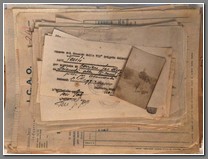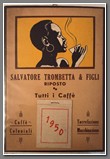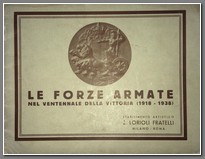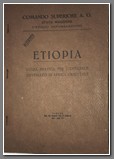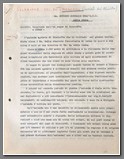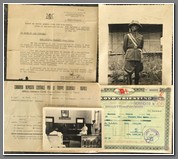Remarkable archive of receipts, invoices and correspondence from Ethiopia from the 7th and 12 Colonial Brigade. Well over 100 documents and manuscripts. As these were colonial brigades, the soldiers were Eritrean ascaris. When they purchased something, they signed with their thumb print. If they were an NCO, they signed their name and used their personal seal. Numerous invoices from Italian companies based in Addis Abeba for everything from clothing to electricity, to food/alcohol, machinery, instruments for gardening, fuel, magazines, photo processing, parts replacement, various other supplies. Numerous correspondence from the commander of the brigades as well as telegrams. Some documents with mastheads in Tigrinia. One document in particular is interesting because it is a full accounting in detail of the costs associated with a festival of Mascal in September, 1938 and other invoices for the distribution of gifts and “mastica” during the festival. Some documents signed by the Brigade Colonel Fortunato Martinelli. This archive provides great insight into the daily requirements of local indigenous troops in the Italian army in the years between the conquest of Ethiopia and WW2. SOLD
Price: 2000.00
Note from the internet: Colonel Fortunato Martinelli was the garrison commander of Gondar. The first attempt to open a crack in the Gondar defences of the Italians was made on 16- 19 May 1941, by Kerforce from the Sudan. "Chilga was a very strong natural defensive position of which the main feature was a 2000-foot escarpment, which any attacking force from the west would have to climb. It was held in strength by the 5000 men of the 4th Colonial Brigade commanded by Lieutenant Colonel Miranda under the garrison commander, Colonel Martinelli.” When Gondar fell, Martinelli was captured (POW No. 318177).

